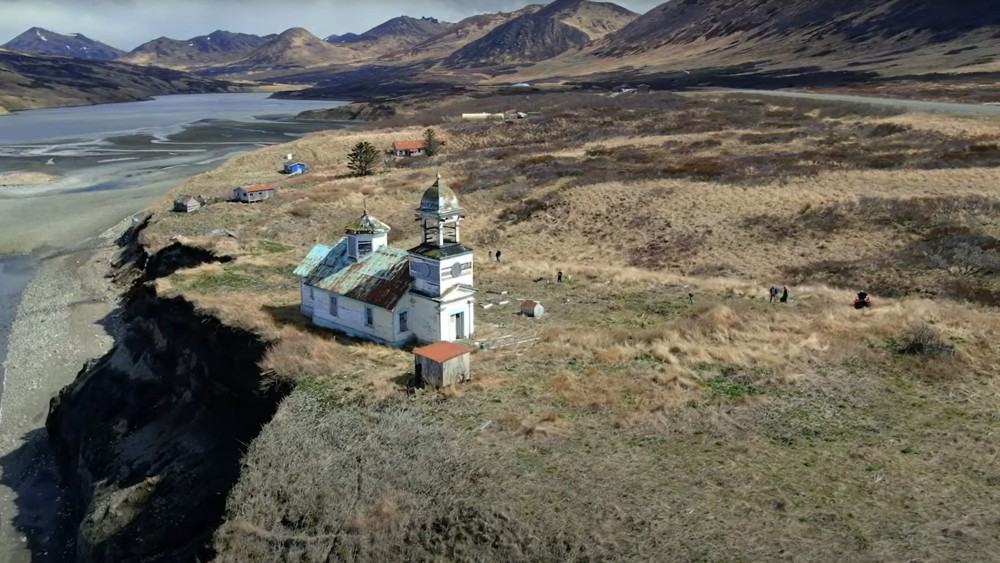Preservation of church and planet
“The least green thing,” says Bob Jaeger of Partners for Sacred Places, “is to tear down and replace the building.”

An aerial view of Ascension of Our Lord Orthodox Church in Karluk, Alaska, on Kodiak Island. (Courtesy photo)
Here’s one way churches can combat climate change: by preserving their buildings, rather than replacing them or selling them to someone who will.
“The most ecologically friendly building is one you already have,” said CJ Armstrong, senior architect and vice president at Multistudio in Lawrence, Kansas. “If you don’t have to build new or if you can figure out how to reuse it, that’s honestly the most sustainable thing that you can do.”
Armstrong specializes in adaptive reuse, with a focus on religious spaces. He explained the environmental cost of demolishing a building.




